
Бази даних
Наукова періодика України - результати пошуку
 |
Для швидкої роботи та реалізації всіх функціональних можливостей пошукової системи використовуйте браузер "Mozilla Firefox" |
|
|
Повнотекстовий пошук
| Знайдено в інших БД: | Реферативна база даних (4) |
Список видань за алфавітом назв: Авторський покажчик Покажчик назв публікацій  |
Пошуковий запит: (<.>A=Nemyrovskyi Y$<.>) | |||
|
Загальна кількість знайдених документів : 9 Представлено документи з 1 до 9 |
|||
| 1. | 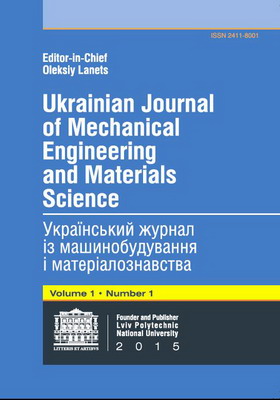
Nemyrovskyi Y. Cylindrical Control of Holes of Tube Details Manufactured by Deforming Broaching [Електронний ресурс] / Y. Nemyrovskyi, E. Posvyatenko, S. Sheikin, Y. Tsekhanov // Ukrainian journal of mechanical engineering and materials science. - 2018. - Vol. 4, Num. 2. - С. 14-25. - Режим доступу: http://nbuv.gov.ua/UJRN/ujmems_2018_4_2_4 This work is devoted to the issues of processing holes in different thickness of tubular billets great length deforming broaching. The urgency of this problem is substantiated. The results of studying the regularities of deformation of a material in the deformation zone under deforming broaching are presented. The reasons for the formation of this type of geometric error as the curvature of the axis of the machined hole are established. They are caused by the variation of axial deformations of the sections of blanks of various thickness in the circumferential direction. An analytical-experimental model for determining the curvature of the axis of processed products is given. The factors influencing this kind of error are systematized. The main structural factors of the deforming broach are identified, which can influence this kind of error. Experimental studies were carried out to optimize the design parameters of the instrument. An experimental mathematical model is developed to determine the influence of the main constructive factors of the instrument on the change of this type of error. The conditions for minimizing the curvature of the axis of the machined hole are established. The influence of the conditions of basing the workpiece on the curvature of its axis is determined. The recommendations on the design of deforming broaches have been developed, which make it possible to ensure the alignment of the workpiece and the tool. New designs of deforming broaches have been developed, which make it possible to control the cylindricality of the treated deep holes. The results of experimental verification of the deforming broach designs developed during the processing of a pilot batch of various thickness blanks are presented. | ||
| 2. | 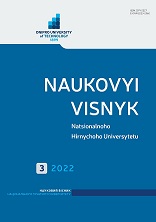
Nemyrovskyi Ya. B. The use of deforming broaching for enhancing the efficiency of cutter chisels [Електронний ресурс] / Ya. B. Nemyrovskyi, V. V. Krivosheya, S. E. Sardak, I. V. Shepelenko, Yu. A. Tsekhanov // Науковий вісник Національного гірничого університету. - 2020. - № 2. - С. 61-66. - Режим доступу: http://nbuv.gov.ua/UJRN/Nvngu_2020_2_12 Purpose. To determine the potential of deforming broaching for the improvement of efficiency of cutter chisels in the mining industry. Methodology. The study of the application of the technological process of deforming broaching was carried out based on the experimental research into conditions of assembly of press couplings corresponding to cutting rock-destroying tools, the working surface of which is reinforced with solid-alloy inserts. Findings. Based on the conducted research, a new process of assembling the crowns of cutter chisels with the use of deforming broaching was developed. Originality. It was determined that the range of angles of inclination of generatrix of the working cone of the deforming element and the roll-treading lip of the insert, which are necessary for efficient machining and pressing in crowns of cutters, is 4 - 16<^>o | ||
| 3. | 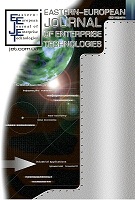
Nemyrovskyi Ya. Designing the structures of discrete solid-alloy elements for broaching the holes of significant diameter based on the assessment of their strength [Електронний ресурс] / Ya. Nemyrovskyi, I. Shepelenko, E. Posviatenko, Yu. Tsekhanov, S. Polotnyak, S. Sardak, V. Bandura, Yu. Paladiichuk // Восточно-Европейский журнал передовых технологий. - 2020. - № 3(7). - С. 57-65. - Режим доступу: http://nbuv.gov.ua/UJRN/Vejpte_2020_3(7)__8 Розглянуто питання конструювання та оцінки міцності твердосплавних елементів деформуючих протяжок значного діаметра (більше 150 мм) для розробленого процесу дискретного протягування. Граничний стан інструмента оцінено за двома критеріями міцності: питомої потенційної енергії формозміни та максимальних дотичних напружень. Числовим моделюванням методом скінченних елементів отримано розподіл еквівалентних напружень в елементах інструмента та контактних напружень по поверхні контакту твердосплавна вставка - корпус, що надало можливість проаналізувати міцність інструмента під навантаженням. Моделювання виконано у випадку одиничного нормального навантаження, що забезпечило універсальність розрахунку для любих значень контактного тиску. Отримано формули для розрахунку допустимого контактного тиску залежно від одиничного навантаження. Встановлено вплив висоти виступу вставки над поверхнею корпусу на міцність елементів збірного інструмента. Розроблено інженерні залежності, які визначають необхідну величину виступу вставки над корпусом залежно від граничного навантаження. Розглянуто приклад розрахунку міцності збірного деформуючого елемента у процесі обробки гільзи з сірого модифікованого чавуну твердістю HB230. Виконанні розрахунки показали, що деформуючий елемент, розроблений для нового технологічного процесу дискретного протягування, відповідає умовам міцності за умови дотримання співвідношення h | ||
| 4. | 
Shepelenko I. Simulation of micro-cutting in the process of finishing anti-friction non-abrasive treatment [Електронний ресурс] / I. Shepelenko, Y. Tsekhanov, Y. Nemyrovskyi, E. Posvyatenko, P. Eremin // Ukrainian journal of mechanical engineering and materials science. - 2019. - Vol. 5, Num. 2. - С. 43-52. - Режим доступу: http://nbuv.gov.ua/UJRN/ujmems_2019_5_2_7 The influence of the shapes and sizes of microroughnesses on the creation of favorable conditions for micro-cutting of antifriction material by modeling the contact interaction of microroughnesses with the treated surface during the finishing antifriction non-abrasive treatment (FANT) is studied in the work. It is shown that the formation of the anti-friction coating FANT depends on the conditions of contact interaction of the tool with the treated surface, and the shape and size of the microroughness determine the quality of the resulting coating. In the study of FANT at the stage of micro-cutting, a similarity and dimension theory method was used, according to which cutters made of gray cast iron SCh20 were made, the geometry of the cutting part of which simulated a separate microroughness of the surface of the workpiece with different front cutting angles. As a contacting surface and coating material used brass L63. The micro cutting process is considered as a low-temperature process of deep plastic deformations with a predominance of a simple shear of the processed material in the chip formation zone according to the free orthogonal cutting scheme. A scheme for the interaction of microroughness with the treated surface is constructed with the friction-mechanical method FANT. It has been established that the cutting blade of a cast-iron micro-cutter wears out intensively in the process of interacting with a brass surface, and the process of changing the geometry of the tip of the cutter occurs in accordance with the principle of adaptability of the entire system of the cutter - the part according to which the minimum of micro-cutting energy is realized. It is proved that with a decrease in the cutting front angle, the blunting radius of the cutting edge increases, and the actual cutting depth and the volume of microchips decrease. Reducing the cutting front angle contributes to the strain hardening of the rubbed material, which reduces the chip formation process of the antifriction material. In order to intensify micro-cutting and obtain a high-quality FANT coating, single microroughnesses of the treated surface should have a cutting front angle <$E gamma~symbol У~0 symbol Р>. The obtained experimental data and simulation results made it possible to present contact interaction diagrams of the tool with the surface being machined for various angles during FANT at the stage of microcuts, and also to establish the basic laws of their parameters. An analysis of the characteristic microcutting patterns in FANT by the friction-mechanical method made it possible to recommend the parameters of the initial surface microrelief, thereby creating favorable conditions for micro-cutting of the antifriction material and to improve the quality of the formation of the antifriction coating. | ||
| 5. | 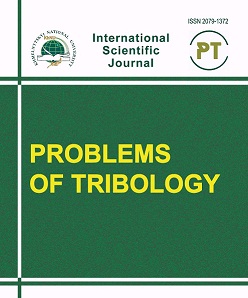
Nemyrovskyi Ya. B. Creation of progressive hole processing processes based on the study of contact phenomena during deforming broaching and finishing antifriction non-abrasive treatment in various technological environments [Електронний ресурс] / Ya. B. Nemyrovskyi, I. V. Shepelenko, E. K. Posviatenko, M. I. Chernovol, F. Y. Zlatopolskiy // Problems of tribology. - 2022. - Vol. 27, no. 1. - С. 14-25. - Режим доступу: http://nbuv.gov.ua/UJRN/Ptl_2022_27_1_4 | ||
| 6. | 
Shepelenko I. V. Creation of new technological methods for surface engineering based on broaching [Електронний ресурс] / I. V. Shepelenko, E. K. Posviatenko, Ya. B. Nemyrovskyi, V. V. Cherkun, I. P. Rybak // Problems of tribology. - 2022. - Vol. 27, no. 2. - С. 6-12. - Режим доступу: http://nbuv.gov.ua/UJRN/Ptl_2022_27_2_3 | ||
| 7. | 
Nemyrovskyi Ya. B. Development of a technological process for the restoration of piston pins using deforming broaching [Електронний ресурс] / Ya. B. Nemyrovskyi, I. V. Shepelenko, M. I. Chernovol, F. Y. Zlatopolskiy // Problems of tribology. - 2022. - Vol. 27, no. 3. - С. 41-48. - Режим доступу: http://nbuv.gov.ua/UJRN/Ptl_2022_27_3_6 | ||
| 8. | 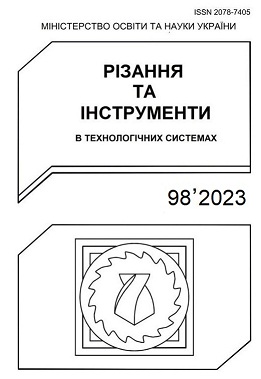
Nemyrovskyi Ya. Improving the processing quality of cylinder liners using combined technology [Електронний ресурс] / Ya. Nemyrovskyi, I. Shepelenko, R. Osin, E. Posviatenko // Різання та інструменти в технологічних системах. - 2022. - Вип. 96. - С. 121-130. - Режим доступу: http://nbuv.gov.ua/UJRN/rits_2022_96_15 | ||
| 9. | 
Nemyrovskyi Ya. B. Improving the technology for restoring worn parts based on cold plastic deformation [Електронний ресурс] / Ya. B. Nemyrovskyi, V. V. Otamanskyi, O. L. Melnik, I. V. Shepelenko, N. I. Posviatenko // Problems of tribology. - 2024. - Vol. 29, no. 3. - С. 31-42. - Режим доступу: http://nbuv.gov.ua/UJRN/Ptl_2024_29_3_6 | ||
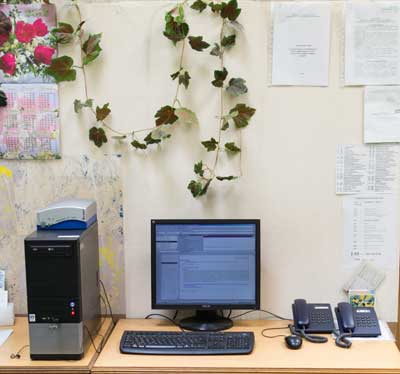 |
| Відділ наукової організації електронних інформаційних ресурсів |
 Пам`ятка користувача Пам`ятка користувача |